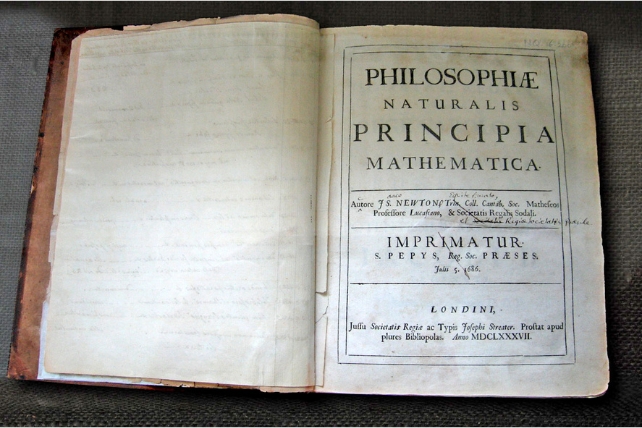
When Isaac Newton put pen to parchment in 1687 to document his influential laws of motion, he likely could not have imagined that scholars would still be analyzing them over three hundred years later.
Writing in Latin, Newton detailed three fundamental laws that explain the movement of objects in our universe. These principles have since been translated, analyzed, and vigorously debated.
However, a philosophy expert on language and mathematics suggests that our understanding of Newton’s first law of motion may have been misinterpreted for a long time.
Virginia Tech philosopher Daniel Hoek aims to “correct the record” following his identification of what he calls a “clumsy mistranslation” in the original English version from 1729 of Newton’s Latin work, Principia.

From this translation, numerous scholars and educators have long defined Newton’s first law of inertia as stating that an object will either continue in a straight line or remain stationary unless acted upon by an external force.
This explanation holds somewhat, yet it falls short when recognizing that external forces are always at play—a consideration that Newton would have likely taken into account in his original phrasing.
Upon reviewing historical texts, Hoek noticed that this prevalent interpretation included a misunderstanding that went unnoticed until 1999, when two researchers highlighted an overlooked Latin term: quatenus, which translates to “insofar,” rather than “unless.”
To Hoek, this distinction is crucial. Instead of suggesting that an object maintains its momentum when unperturbed, Hoek asserts that Newton intended to convey that every alteration in an object’s momentum—any jolt, shift, or acceleration—is the result of external influences.
“By reintroducing that one overlooked word [insofar] into the discussion, those researchers have revitalized a core concept in physics to its original brilliance,” Hoek explained in a blog post outlining his research, later published in a 2022 paper.
Despite the significance of this correction, it has yet to gain widespread acceptance. Even now, it might struggle to be acknowledged amid centuries of established interpretation.
“Some view my interpretation as too radical and unconventional to take seriously,” Hoek remarks. “Others believe it’s so evidently correct that it hardly warrants debate.”
For the general public, this may sound like a mere technicality. However, Hoek acknowledged that while this new interpretation may not transform physics, examining Newton’s original writings sheds light on his intentions.
“Much ink has been spilled on the question of what the law of inertia truly entails,” states Hoek, who was intrigued by Newton’s intentions during his academic journey.
If we adhere to the widely accepted translation—that objects travel in straight lines until an external force acts on them—this prompts a fundamental question: why would Newton formulate a law that addresses bodies free from external forces when such a condition doesn’t exist in our universe, where gravity and friction are always present?

“The central goal of the first law is to deduce the presence of force,” stated George Smith, a philosopher from Tufts University and an authority on Newton’s texts, to journalist Stephanie Pappas for Scientific American.
Indeed, Newton provided three specific illustrations to elucidate his first law of motion. The most compelling example, according to Hoek, is the behavior of a spinning top, which slows down in a tightening spiral due to air friction.
“By presenting this example,” Hoek notes, “Newton explicitly demonstrates how his First Law applies to accelerating bodies that are influenced by forces—essentially depicting real-world scenarios.”
Hoek believes this updated interpretation reinforces one of Newton’s groundbreaking ideas: that the same physical laws governing earthly objects also apply to celestial bodies like planets and stars.
“Every fluctuation in speed and every change in trajectory,” Hoek reflected—from tiny atoms to massive galaxies—”is directed by Newton’s First Law.”
This insight draws a fascinating connection between us and the expansive cosmos.
This research paper has been published in the Philosophy of Science.
A previous version of this article was released in September 2023.









